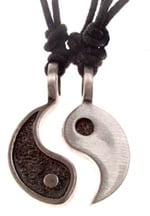Are brains that fall in love more sensitive?
 In Human Brains Are Built to Fall in Love we looked at the neurochemical reality that lies behind our instincts to fall in (and out of) love. We saw that our ancestors may have been pair bonders for a very long time, implying that pair bonding serves important ends for our species. We observed that the same bonding behaviors that effortlessly strengthen our pair bonds also reduce stress and increase well-being.
In Human Brains Are Built to Fall in Love we looked at the neurochemical reality that lies behind our instincts to fall in (and out of) love. We saw that our ancestors may have been pair bonders for a very long time, implying that pair bonding serves important ends for our species. We observed that the same bonding behaviors that effortlessly strengthen our pair bonds also reduce stress and increase well-being.
In this article we’ll look at a hidden pair-bonder vulnerability that causes misery both in and out of the bedroom. Namely, the tendency to pursue excess. This hazard came to light when scientists offered amphetamines to two vole species. The species are apparently identical but for one characteristic. One pair bonds, while the other is cheerfully promiscuous. (Think human and bonobo. Our limbic brain possesses the “gear” for pair bonding while the bonobo’s doesn’t.)
Which species used more of the drugs and showed higher brain levels of dopamine (the “I gotta have it” neurochemical)? The pair-bonding species. (And here’s a more recent article about research that shows just how prone a pair-bonding species is to alcoholism.)
Apparently, they have lots of a specific type of dopamine receptor called “D2” in the reward circuitry of their brains. Think of D2 as the “craving” receptor.
In contrast, the non-pair-bonders have more “D1” receptors. D1s play a little-understood role in easing cravings for intense stimulation. When flooded with enough dopamine, these D1 receptors deliver the message, “Okay, I’ve had enough of this drug, this alcohol, or this crazy rat humping me. Think I’ll get on with my day.” *
Sex may be fun for chimps, but falling in love (the urge to pair bond) is such an important factor in our species’ genetic success that, for us, the phenomenon may rival a drug trip. The experience has been known to launch a thousand ships, destroy political careers, and make priests break vows. By the same token, when a pair bond breaks, it can motivate the abandoned partner to grab a cleaver and hack off an appendage.
Let’s not underestimate our pair-bonding program. After all, it’s probably an exaptation of a far older mammalian program, the one that bonds infants and caregivers. Parents, too, go gunning when the survival of (bond with) their offspring is at stake.
Soap operas and reality shows are not the only other menaces that arise as a consequence of this potent brain mechanism. So is addiction. Odd as it seems, the impulse to fall in love (and mate to the point of habituation) may be behind the ease with which we hijack our brains using various risky excesses. Our delicate reward circuitry, which produces those all-consuming feelings when we fall in love, is the same pathway that produces the all-consuming feelings many users experience when they substitute drugs of abuse, alcohol, extreme porn, gambling, compelling video games, and so forth.
Obviously, this highly sensitive circuitry evolved to push us past any defensiveness and get us hooked on lovers—at least for long enough to fall in love with our children. It did not evolve to promote addiction to other activities and substances. Only humans can regularly exploit this mechanism with dicey surrogates.
It’s as if we pair bonders have an extra “little hole” in our brains whispering, “Fill me up.” It evolved in environments where our primary option for filling it was the occasional novel sexual partner (often followed by a “rest” as habituation set in). Artificial substitutes were absent. Sadly, this “hole” can never be filled by today’s blitz of brain-hammering indulgences. Too much stimulation dysregulates this part of the brain. It triggers subsequent neurochemical lows while our over-stimulated brains recover. The lows, in turn, can drive even more intense cravings to self-medicate. Voilà! Before we know it, we’re sharing our story in a 12-Step group.
This delicate feature of our brains may go far toward explaining why, as a society, we’re often looking for the next fix. More novelty. More stimulation. In fact, we don’t lack stimulation; we’re out of balance.
Our dilemma leads back to Part 1 of this article, which pointed out that bonding behaviors soothe stress at the same time they strengthen bonds. They appear to work because they produce comforting levels of oxytocin for the right receptors. Oxytocin has been shown to reduce cravings for sugar and drugs, and even to reduce withdrawal symptoms. Could this help explain why lovers notice daily bonding behaviors can ease sexual frustration (cravings) and forestall habituation between them in a way that pursuing ever more sexual stimulation cannot?
Even if humans can act like bonobos, we might be more content if we explored our unique options for creating balance as pair bonders.
Whether a particular human chooses to sidestep much of the mating drama by remaining single, unite for life, or pollinate many flowers without any stable bonds, s/he is generally stuck with a pair-bonder’s brain. This wiring could have major implications in areas of life that have nothing directly to do with romance. For example, in or out of relationship, too little daily affectionate interaction with others, and too much stimulation can increase distress without our conscious awareness.
The human brain has evolved to fall in love…repeatedly, should opportunity knock. The cycle of pair bonding, mating frenzy (excess), habituation, and pairing up again serves our genes, across populations, in many cultural variations—even when it creates chaos and taxes our capacity for forgiveness.
 By becoming aware of our pair-bonding brain’s highly sensitive reward circuitry and its impact on our lives, we can more easily weigh the relative benefits of (1) yielding to our programmed impulses and (2) learning to ease them using natural techniques like meditation, exercise, yoga, bonding behaviors, and careful cultivation of sexual energy. Perhaps our pair-bonding program is a major impetus for humankind’s many “spiritual” practices that strengthen inner equilibrium.
By becoming aware of our pair-bonding brain’s highly sensitive reward circuitry and its impact on our lives, we can more easily weigh the relative benefits of (1) yielding to our programmed impulses and (2) learning to ease them using natural techniques like meditation, exercise, yoga, bonding behaviors, and careful cultivation of sexual energy. Perhaps our pair-bonding program is a major impetus for humankind’s many “spiritual” practices that strengthen inner equilibrium.
___
* When vole researchers administer a dopamine-like substance that lights up D2 (craving) receptors, but not D1 (satiety) receptors, the voles hear rhapsodies and see stars—even if Pyramis Vole and Thisbe Vole do not have sex because they’re in different cages at the time. In contrast, when scientists prevent activation of D2 receptors (without affecting D1s), there are no valentines exchanged, just gametes. In short, dopamine-induced cravings, triggered by mechanisms within the brain, are critical to pair bonding. Without these mechanisms, even oxytocin, the “bonding hormone,” won’t cause voles to fall in love.